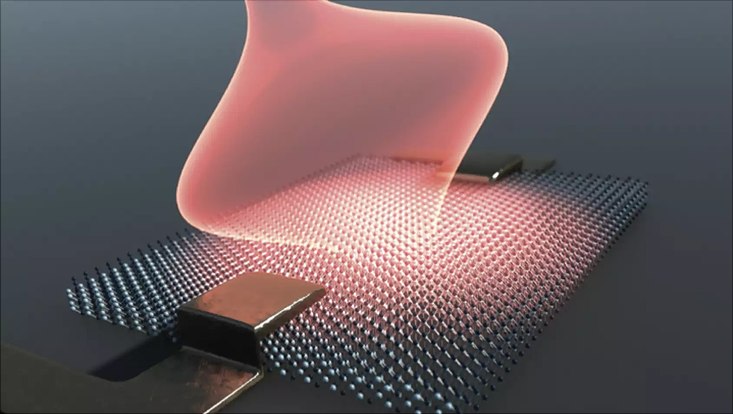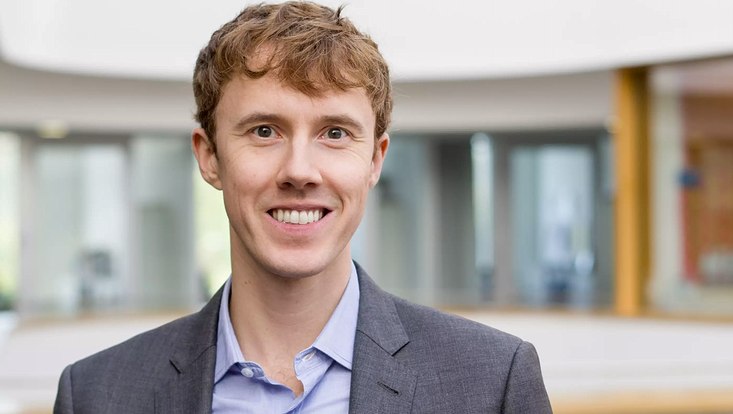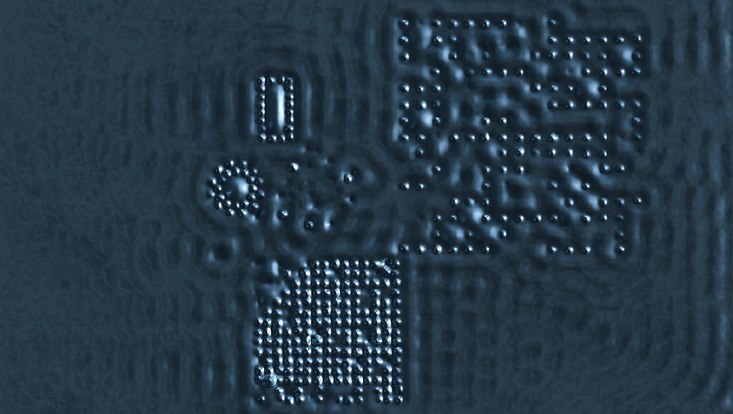Review on ultrafast control of quantum materials
15 October 2021

Photo: MPSD
A review involving a team of MPSD scientists, just published as a colloquium in the prestigious Reviews of Modern Physics, explores how light can fundamentally alter the properties of solids – and how these effects can be harnessed in future applications. The review on the latest developments in ultrafast materials science is both meant as a guide for graduate students entering the field as well as a standard reference for the community. It was written by MPSD group leaders James McIver and Michael Sentef as well as Dante Kennes from RWTH Aachen University, Alberto de la Torre (Brown University, USA), Simon Gerber from the Paul Scherrer Institute, Switzerland, and Martin Claasen (University of Pennsylvania, USA). The team discusses experiments and theoretical ideas on how solids react to excitations with short laser pulses or the coupling of light and matter during irradiation with light.
A piece of material, when left alone, is usually in thermal equilibrium and governed by the laws of thermodynamics, in which a few known external conditions (such as temperature, pressure) fully determine its behavior. However, many practical applications require the knowledge not only of the equilibrium state of a given material, but also of its excitations. “If we could design excited states at will, this would allow us to create new applications, for instance in high-speed information processing and storage, lossless energy transfer, and quantum technologies,“ explains James McIver.
In recent years, the field of ‘pump-probe experiments’ has seen tremendous progress. In these experiments a short ‘pump’ laser pulse drives a material into an excited state. Stroboscopic ‘probe' measurements then create stop-action movies of the ensuing dynamics. “Thanks to technical developments, scientists can now exert control over electrons, their spin and orbital degrees of freedom, and the crystal lattice of ions,“, says Michael Sentef. “Crucially, we are able to track these controlled states of matter with a time resolution of femtoseconds.“ One femtosecond is an incredibly small amount of time. It is to one second what one second is to the age of the universe.
To review this rapidly growing field, the scientists formed a team involving both experimentalists — de la Torre, Gerber and McIver — and theorists — Claassen, Kennes and Sentef. “We believe that it is vitally important to identify unifying themes of how we can control materials with light, and to push towards applications,“ says Dante Kennes.
Gerber highlights the novel aspect that different probing techniques can be combined to learn about many different parts of a dynamical system at the same time. “When you hit a material with a laser, the electrons get pushed around and the ions that form the crystal lattice start to move at the same time,” he explains. “Unlike in thermal equilibrium, where there is always a balance between these different constituents of a system, the laser can disrupt this balance, leading to nonequilibrium states where energy flows within the material in sometimes unexpected ways. It is invaluable to learn about how the different parts react to the external driving force but also to each other. For instance, we have learned about the mutual forces between electrons and ions by monitoring both of their dynamics simultaneously.” Such new insights pave the way for future work, adds Kennes: “The knowledge gleaned for instance allows us to better understand which forces pair electrons to create better superconductors, materials that conduct electricity without heat losses and make for fantastic magnets.“
“New experimental capabilities also stimulate theoretical ideas, which in turn motivate experimentalists to look for ways to realize those ideas,“ says Martin Claassen. „For instance, around ten years ago theorists proposed changing a material’s topology — a quantum-mechanical property which can lead to dissipationless transport along its edges while being insulating in the bulk — by exposing it to strong light sources. This is called Floquet engineering after the French mathematician who invented a formalism to describe dynamical systems which are driven by forces that oscillate in real time.“
The resulting Floquet topological states were only recently measured in an experiment led by James McIver. “We had to invent and build a whole new experiment to achieve that,“, he says. “In our review, we stress the synergies that are created when theory and experiment go hand in hand. We believe that the field is now ripe to move from discoveries of new effects in laser-driven materials towards harnessing these effects for potential technologies.“ Collaboration is key here, adds De la Torre: “One way to achieve this is to make use of material growth techniques in order to design samples with desired equilibrium and excited states. These can then be controlled by short laser pulses. This is clearly a team effort, driven both by experimental progress and theoretical understanding, and we hope that our review can help form an even stronger community and attract particularly young researchers to join this scientific journey.“
Source publication
Colloquium: Nonthermal pathways to ultrafast control in quantum materials
A. de la Torre, D. M. Kennes, M. Claassen, S. Gerber, J. W. McIver, M. A. Sentef
Reviews of Modern Physics 93 (4), 041002 (2021)


